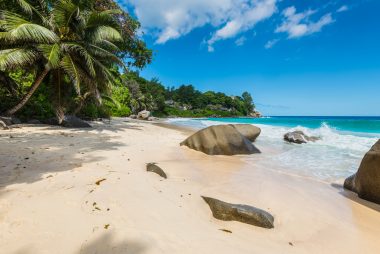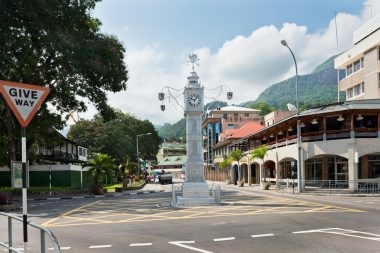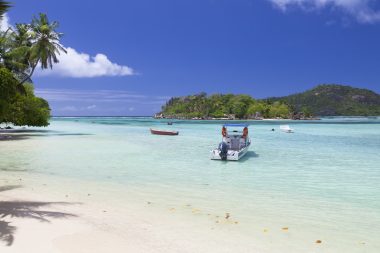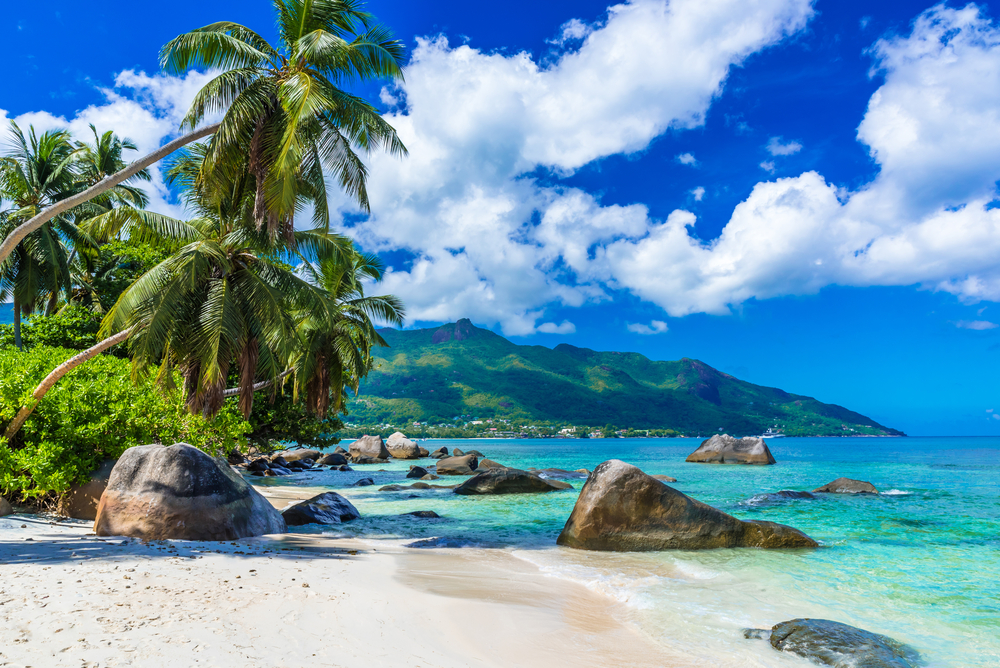For many of us, the thought of the Seychelles conjures up images of swaying palm trees, white sandy beaches, dreamy weather and crystal clear turquoise waters. That’s exactly what this archipelago in the Indian Ocean has to offer, but that’s not all. Mahé is the largest of the 115 Seychelles islands and home to Victoria, the capital of the Republic of Seychelles. The island has an area of only 154 km² and is 28 km long and 8 km wide. Nevertheless, the little paradise is rich in an interesting culture and fascinating, untouched nature.
Mahé – the island of abundance
Mahé, the largest island in the archipelago, is home to around 75,000 people, which is almost 90% of the total population of the Seychelles. Although the island paradise was first discovered by the British, Europeans didn’t come here until the mid-18th century. This area was settled by Arab sailors, British colonialists, French settlers, Tamil and Chinese traders, and African slaves. This created a dynamic cultural mix, the unique Creole culture.
Mahé is the heart of the Seychelles

Regardless of the final destination, all visitors to the Seychelles begin their journey on Mahé, the largest and most diverse island in the archipelago. Many holidaymakers take advantage of island hopping and also visit the islands of Praslin and La Digue. The name of the island comes from the former French governor Mahé de La Bourdonnais. The original name was “Ile d’Abondance” or the “Island of Abundance”. In fact, there is an abundance of dreamlike nature on Mahé, with pristine white sandy beaches, lush forests, exotic trees, picturesque coconut plantations and stunning granite peaks. Mahé is the economic and cultural heart of the Seychelles. In addition to the airport, the island is also home to the government and administrative center of Seychelles, a university, sports stadiums, television and radio stations, craft shops, a commercial and fishing port, and larger companies.
The capital Victoria

In the northeast of Mahé, bordered on one side by steep mountain slopes, lies the capital of the Republic of the Seychelles. Victoria is the cultural and administrative center of the country and the smallest capital city in the world. There are only two dozen streets that reflect not only the cozy feel of the city, but also the way of life of the people here. Its foundation dates back to the French settler period in 1778, before it was later named after Queen Victoria by the British. On its eastern edge, Victoria opens up to the harbour and the sea.
Visually, the city is dominated by stone and wooden houses from the early 20th century, which paint a colorful picture with their colorful facades, shutters and balustrades. Victoria has two main centres, one of which is centred around the Clock Tower, a replica of the clock tower on Vauxhall Bridge in London. This area is home to banks, the post office, the Palace of Justice and the Pirates Arms snack restaurant. Almost opposite is the National Museum, while a little further along the road there are some travel agencies and the tourist information center. The second centre surrounds Sir Selwyn Selwyn-Clarke Market, which is about a five-minute walk from the clock tower. This market is worth a visit, among other things, fish, spices and exotic fruits are offered here.
Mahés National Parks

The island is of granitic origin and hilly, the highest peak is Morne Seychellois, which rises to 905 meters and is part of a national park of the same name. The Port Launay Marine National Park is located near the northwestern side of the island. About five kilometres off the northeast coast of Mahé, in Victoria Harbour, lies the Sainte Anne Marine National Park. Founded in 1973, the park consists of six small islands and a surrounding lagoon. This area has excellent snorkeling conditions, especially in the Sainte Anne Channel, which runs between Sainte Anne Island and Moyenne Island. The granite mountains that form the interior of the island stretch from north to south like a backbone through the landmass. To the east and west of Mahé, there are foothills that extend into the sea like arms, forming coves with clear turquoise waters. Over the course of millions of years, these rocks have evolved into soft sand that nestles in coves, giving the island its characteristic beauty.
Mahé – paradisiacal nature
The center of the island stretches over imposing peaks and forests with a diverse flora and fauna that form a breathtaking backdrop for the island’s numerous hiking trails. Countless freshwater springs dot the rich nature, while tropical palm trees and other plants grow in this region, including mango, papaya, banana, tea, and more. The most famous beach on the island is Beau Vallon in the northwest. Here is also the tourist center, which is almost as busy as the capital itself. In this expansive bay, there are plenty of accommodation options, restaurants, shops, and diving centers. If you are looking for peace and quiet, you should look to the south of the island instead, as the atmosphere here is much more relaxed and contemplative.


